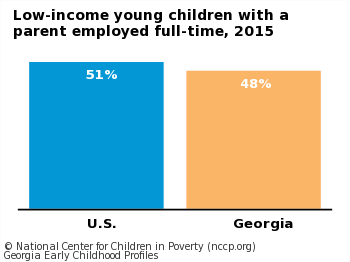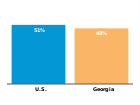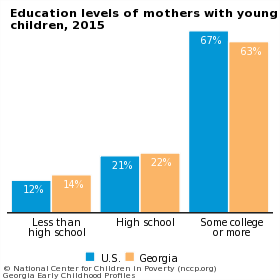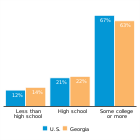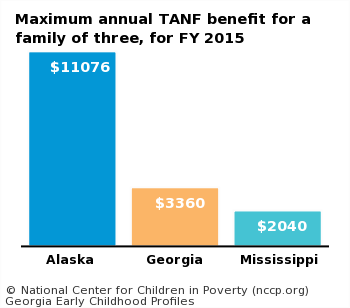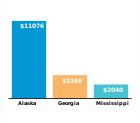State Choices to Promote Effective Parenting
- Extends Medicaid coverage for family planning to otherwise ineligible low-income women [2018]2
Eligibility based on income up to 200% FPL, includes 18 year olds, but not younger individuals. The state also extends eligibility for women losing coverage postpartum. - Exempts single parents on TANF from work requirements until the youngest child reaches age 1 [FY 2016]3
Single custodial parents can have one three-month exemption per child up to a cumulative total of 12 months. - Reduces the TANF work requirement to 20 hours or less for single parents with children under age 6 [FY 2016]3
State Choices to Promote Family Economic Security
- Established a state minimum wage that meets or exceeds $9.10/hr and is indexed to inflation [2016]4
$5.15 - Exempts single-parent families of three below the federal poverty level from personal income tax [2016]5
- Offers a refundable state Earned Income Tax Credit [2017]6
- Offers a refundable state dependent care tax credit [FY 2016]7
Under Georgia Tax Credit for Child and Dependent Care Expenses, the maximum nonrefundable credit is $630. - Keeps copayments for child care subsidies below 10% of family income for families of three at 150% FPL [2015]8
Not eligble. - Offers exemptions and/or extensions of the TANF benefit time limit for women who are pregnant or caring for a child under age 6 [FY 2016]3
- Has paid family leave for a minimum of 6 weeks with partial replacement of wages [2018]9
Data Notes and Sources
Last Updated: May 13, 2015
Send us recent developments to update your state's profile.
- National data were calculated from the 2011 American Community Survey, representing information from 2011. State data were calculated from the 2009-2011 American Community Survey, representing information from the years 2009 to 2011.
- Guttmacher Institute. (2018). Medicaid Family Planning Eligibility Expansions. New York, NY: Guttmacher Institute. Https://www.guttmacher.org (accessed January 3, 2018).
- Giannarelli, L., Heffernan, C., Minton, S., Thompson, M., & Stevens, K. (2017). Welfare Rules Databook: State TANF Policies as of July 2016. OPRE Report 2017-82. Washington, DC: Office of Planning, Research, and Evaluation, Administration for Children and Families, U.S. Department of Health and Human Services. https://www.acf.hhs.gov (accessed December 19, 2017).
- National Conference of State Legislatures. 2016. State minimum wages: 2016 minimum wages by state. Washington, DC: NCSL. Http://www.ncsl.org (accessed February 18, 2016).
- National Center for Children in Poverty (NCCP), 50-State Policy Tracker. (2016). 50-State Data, Income Tax Liability. http://nccp.org (accessed July 20, 2018).
- Williams, E., & Waxman, S. (2018). States Can Adopt or Expand Earned Income Tax Credits to Build a Stronger Future Economy. Washington, DC: Center on Budget and Policy Priorities. https://www.cbpp.org (accessed June 29, 2018).
- National Women's Law Center. (2017). State Child Care and Dependent Care, Tax Provisions, Tax Year 2016. Washington, DC: National Women's Law Center. https://nwlc.org (accessed December 19, 2017).
- Schulman, Karen; Blank, Helen. 2015. Building Blocks State Child Care Assistance Policies 2015. National Women's Law Center. Http://www.nwlc.org (accessed November 11, 2015).
- National Conference of State Legislatures. (2018). State Family Medical Leave and Parental Leave Laws. Washington, DC: National Conference of State Legislatures. http://www.ncsl.org (accessed July 20, 2018).


